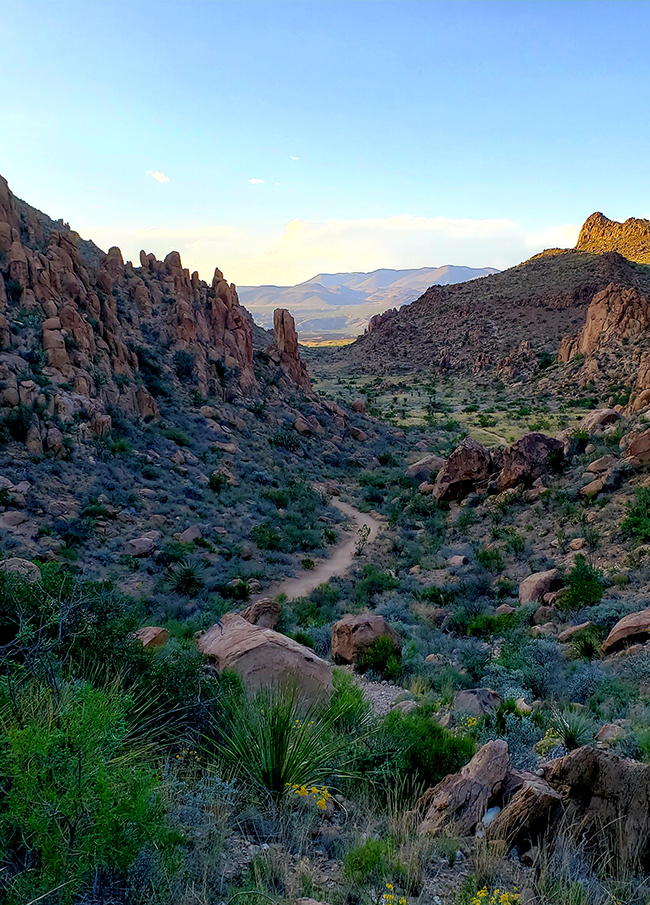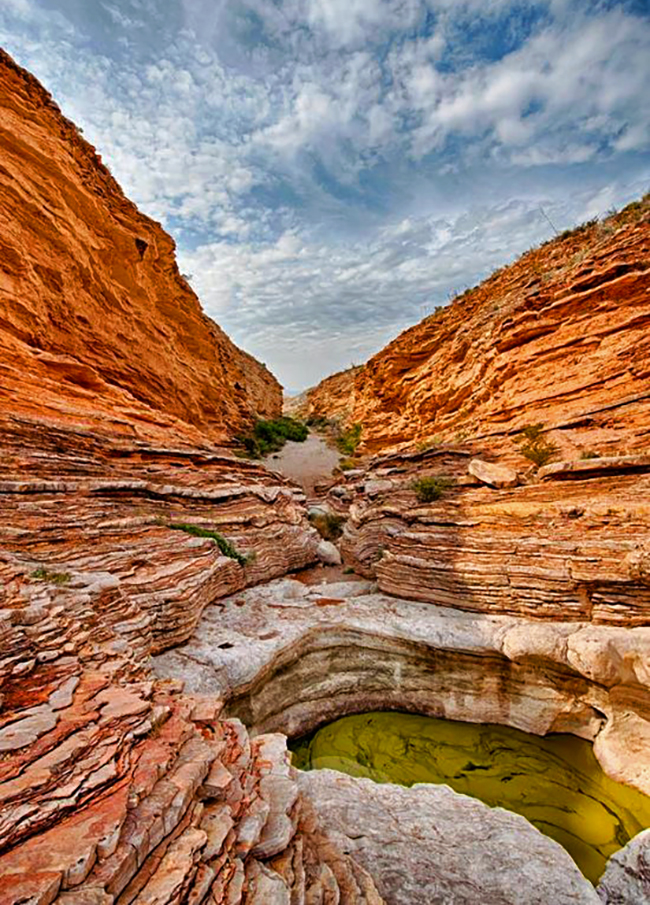rom mid-June to August, biologists release newly hatched Kemp’s ridley sea turtles into the wild at Padre Island National Seashore. Witnessing the release of the rarest sea turtle species in the world is an amazing experience and a must-see event you don’t want to miss. The release is open to the public and takes place around sunrise at 6:45 a.m. on Malaquite Beach in front of the Visitor Center at Padre Island National Seashore on North Padre Island in Corpus Christi, Texas. I was fortunate to attend a release, and it was a once-in-a-lifetime experience I will never forget.
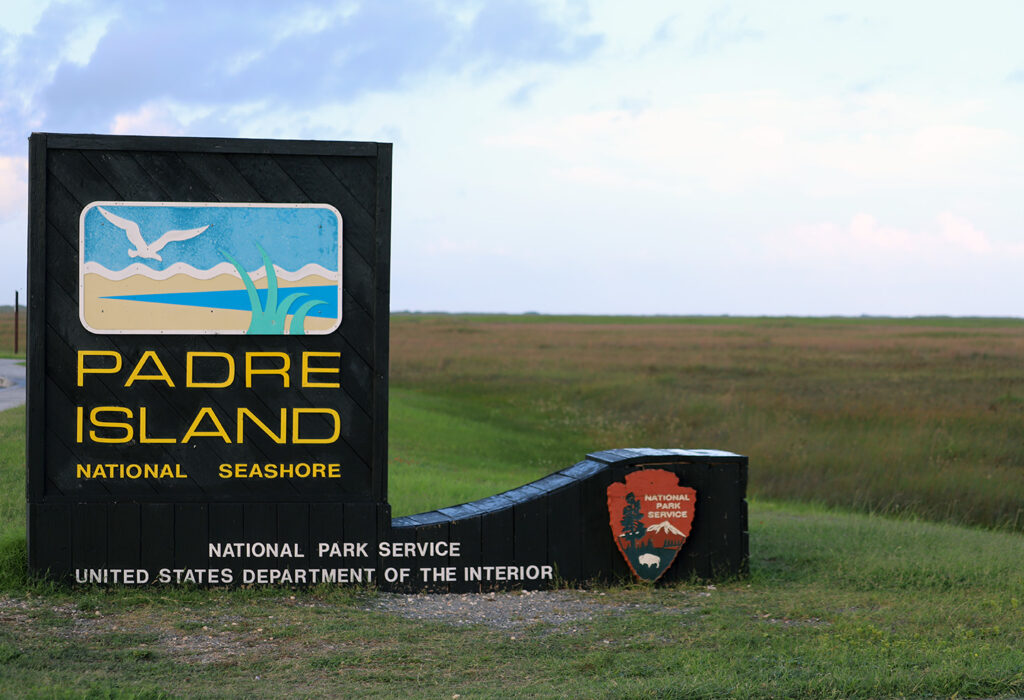
Padre Island National Seashore, a barrier island in the Coastal Bend area of southern Texas, is the longest stretch of undeveloped barrier island in the world and separates the Gulf of Mexico from the Laguna Madre. It protects seventy miles of coastline, dunes, prairies, and wind tidal flats filled with life and it is an important habitat for many rare, threatened, and endangered species. The island is the nation’s prime nesting beaches for critically endangered Kemp’s ridley sea turtles and is globally important for migrating birds, a haven for over 380 bird species. Padre Island National Seashore is an undeveloped wilderness preserved in its natural state with a rich history, including the Spanish shipwrecks of 1554.
Kemp’s Ridley Turtles
The Kemp’s ridley sea turtle is the smallest and most endangered sea turtle species in the world. The rarest species of sea turtle and critically endangered, it is found primarily in the Gulf of Mexico, but also can appear as far north as New England and Nova Scotia because the currents can carry immature turtles along the Atlantic coast. They feed mostly on crab, their favorite food, but their diet also includes other marine invertebrates and plants, mainly when they are young.
Females come to shore to lay their eggs every one to three years and the males spend their entire lives at sea. The nesting season begins in April and continues through mid-July. During that time, the female turtles lay an average of one to four clutches of eggs. Each clutch can have 50 to 130 eggs.
Kemp’s ridley sea turtles primarily nest in Mexico and southern Texas is at the northern end of their documented historic nesting range. They find more nests at Padre Island National Seashore than any other location in the United States, making it the most important Kemp’s ridley nesting beach in the U.S.
The over-harvesting of the Kemp’s ridley sea turtles’ eggs during the last century attributes to the critical situation. Although their nesting grounds are protected and many commercial fishing fleets now use turtle excluder devices in their nets, unfortunately, the turtles have not rebounded. The population is declining, and the numbers unexpectedly began decreasing in 2010. Scientists are still working to determine the cause of this reversal. The turtles still have current threats of incidental capture in fishing gear, and degradation of marine and nesting habitat. Efforts to save the Kemp’s ridley began in the 1960s and continues today.
Learn more about The Story of the Kemp’s Ridley here.
“… the Kemp’s ridley had quickly become the most endangered sea turtle in the world and was on a trajectory toward extinction.”
The Hatchling Release

The hatchling release takes place around sunrise at 6:45 a.m. on Malaquite Beach in front of the Visitor Center at Padre Island National Seashore. Everyone meets on the deck of the Visitor Center. A park ranger delivers a short educational program held on the deck starting at 6:30 a.m., then the ranger leads the crowd to the release site on the beach to view the hatchling release at 6:45 a.m. If you arrive early, the hatchling release sign is not present until about 6:15 am.
I recommend arriving early to the visitor’s center. Anywhere from 100 to 1000 or more people attend each public release, so getting there early ensures a better view of the hatchlings on the beach along the release perimeter. We arrived shortly after 6:00 a.m. and a crowd had already formed. Not a large crowd, but quite a few people waited in line. We snagged a spot up close to the roped-off boardwalk, which allowed us a fantastic opportunity to be one of the first people on the beach to watch the release, and it gave us a front spot along the release perimeter. I cannot stress strongly enough to arrive early.
After the ranger’s informative–I learned a lot that morning–and thought-provoking talk about the sea turtles, she opened the roped-off boardwalk, and we followed her to the release location on the beach with the masses of people behind us. Excitement danced through me. I couldn’t believe I was about to witness the release of the rarest species of sea turtles in the world. How could anyone not be excited about such an experience?
The sound of the ocean waves crashing to shore and the wet and salty sea air fueled my enthusiasm. As we waited along the viewing area, the warm ocean breeze danced around us, and the sun rose above the horizon. The pink horizon transformed into golden rays, and within moments, the release began. I will never forget the captivating beauty and serenity of that morning.
It wasn’t long before the tide rolled in and water covered our feet. As the sea drew closer to the hatchlings, they scuttled faster across the sand to the water.

To offer a close-up view of the turtles, Park Rangers and volunteers bring the hatchlings around for visitors to see and take no-flash photos. You may not touch or hold the hatchlings, but you get an up-close personal view.
As the tiny sea creatures scuttled across the sand to the safety of the ocean, it is stressful watching the tiny turtles travel to the water, wondering if each one will make it to the ocean, then wondering how the little ones will fare once they are out in the open sea. The baby turtles scrambled along, then stopped on the sand to rest for a few moments before they continued their journey. They held their teeny heads high, determined.
Gulls floated above, hoping to swoop down and snag a baby turtle for their meal. To protect the hatchlings and deter the gulls, trained volunteer “guards” kept the birds at bay with their flags and others followed along with overhead netting.
I rooted for the baby turtles as they crawled down the beach and entered the surf. Once they hit the water, the waves rolled them along, then swallowed them up in an instant. The hatchlings disappeared out of sight. Now, they were on their own, and headed toward the beginning of their new lives out in the sea. I prayed each one survived. I wanted each one to live, to thrive, so they can increase the numbers for the species and have a fighting chance to rebound. Each precious hatchling is priceless to their survival.
Now, even though they are all out in the wide-open ocean with an entire world against them, and face many threats in the marine environment, I still root for them today. I hope years from now, the female hatchlings return to Padre Island National Seashore to lay their eggs.
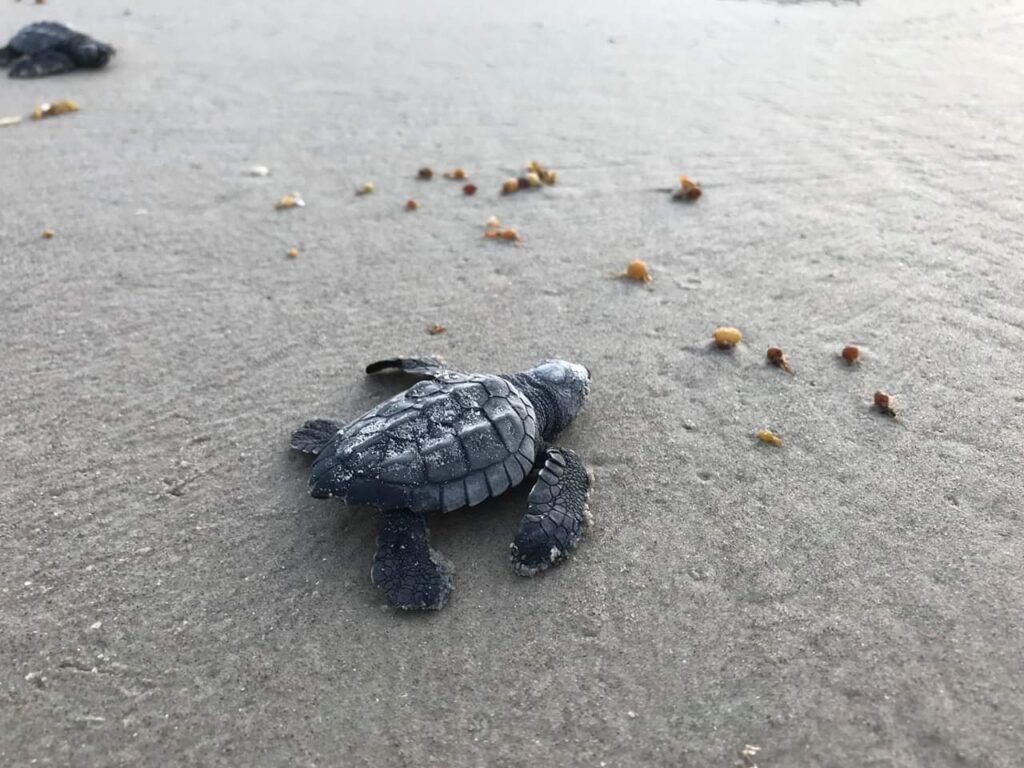





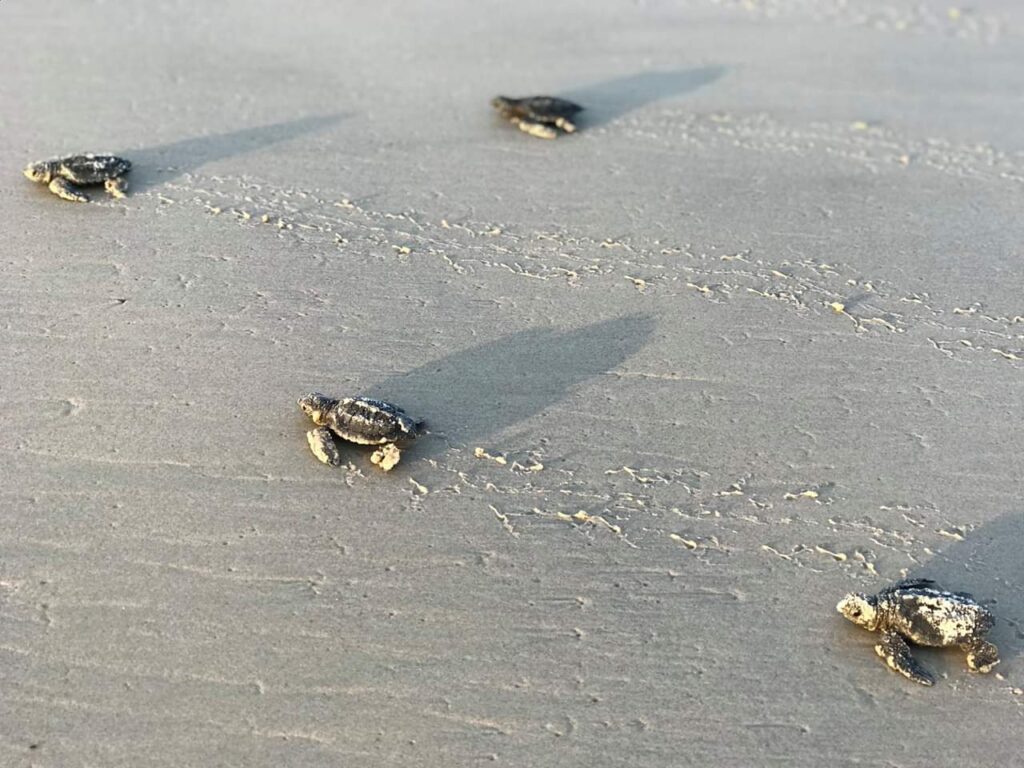

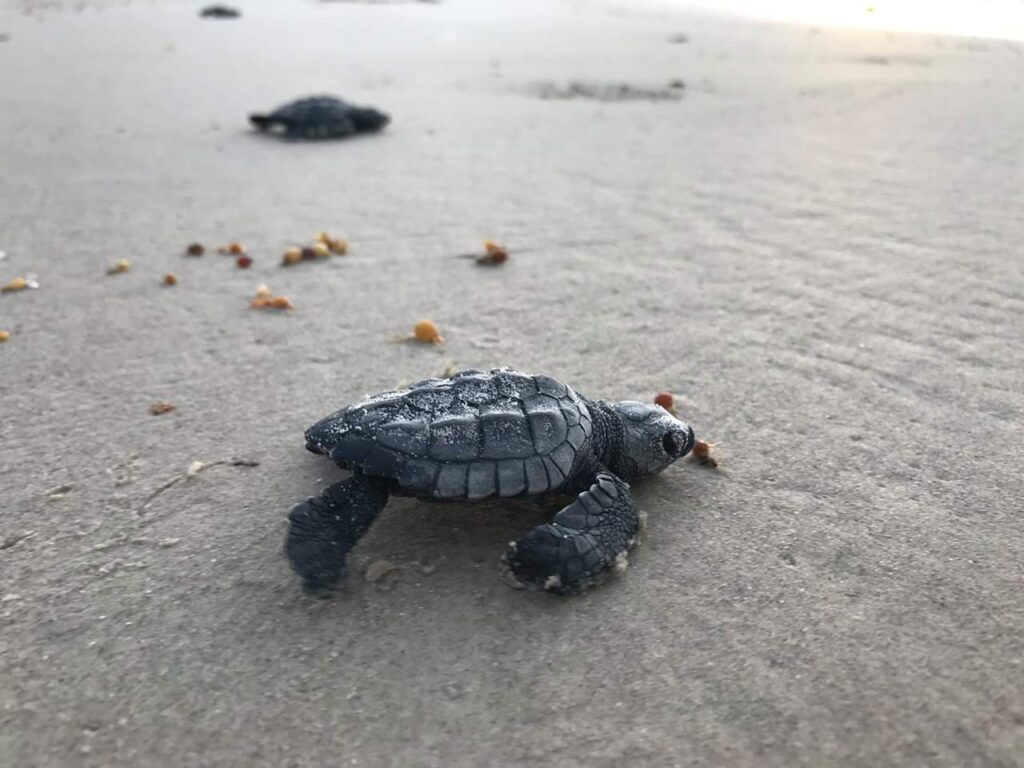
In the End
It was exhilarating.
I witnessed a rare event most never get the chance to see. I saw the rarest species of sea turtle begin its new life as it crawled down the sandy beach, then disappeared into the surf. The once-in-a-lifetime event was a beautiful and magical moment. I encourage all to experience a hatchling release. You’ll never forget it.
Important Information
- Current sea turtle nesting season with a table of projected hatch dates
- Hatchling release FAQ
- Release dates depend on when eggs hatch and when hatchlings are ready for release.
- There is no fee to attend and watch the public hatchling releases.
- Arrive early. The crowd can get large. For the best chance for the best view along the release perimeter, be one of the first visitors to arrive at the visitor’s center.
- Not all releases are open to the public. Call the hatchling hotline at 361-949-7163 or check the Facebook page for updated hatchling information.
- Wear shoes you can get wet that will stay secure on your feet. Do not wear flip-flops.
- The wash of the tide will cover your feet as it encroaches inland. It is imperative to remain still because of the possibility of accidentally stepping on a hatchling.
- Do NOT bring any food or drink. It will attract the gulls.
- Do NOT wear white colored clothing or shoes. This will disorient the hatchlings.
- Do NOT use a flashlight or flash on any electronic device, video equipment, cell phone, or camera. This will also disorient the hatchlings.
- Do NOT wave your arms and attempt to drive away seagulls. They have volunteers specially trained to handle the gulls.
- Give everyone a chance. The release can be crowded, so be courteous and allow others to move up to the front for a better view once you have watched the hatchlings for a few minutes. Share the space with others, so their experience is as enjoyable as yours.
Before You Go

Before you go out to the release, make sure to check the Facebook page or call the Hatchling Hotline at 361-949-7163 to check if the turtles are ready for release on schedule. Sometimes, hatching speeds or slows, so if they cancel the release, a cancellation message is posted on the Facebook page and on the Hatchling Hotline. If they have not announced cancellation messages by 2:00 am the previous night, then they have the release as scheduled.
Directions

Follow Park Road 22 out to Padre Island National Seashore. It will take 25-30 minutes to drive from the hotels and residential areas on North Padre Island to the release site. About one mile after the National Seashore Entrance sign, you will see the National Seashore Entrance Station in the middle of the road. Stop at the Entrance Station, and if it is open, identify that you are attending the release and they will not charge you park entrance fees. About three miles after the National Seashore Entrance Station, you will see a hatchling release sign on the right and the large Malaquite Beach Visitor Center parking lot on the left. You should turn left there, park your vehicle in the large lot, and meet on the deck of the Visitor Center.
Travel and Wander…




